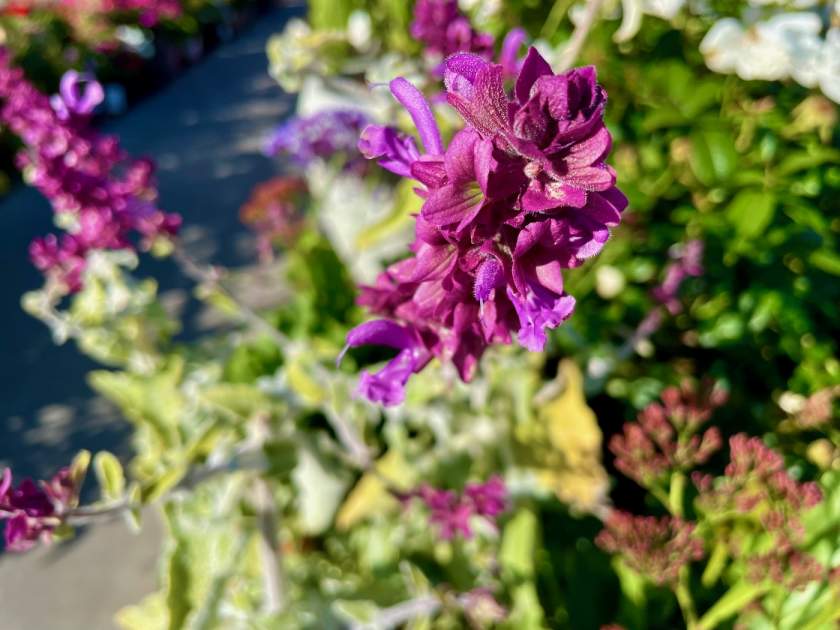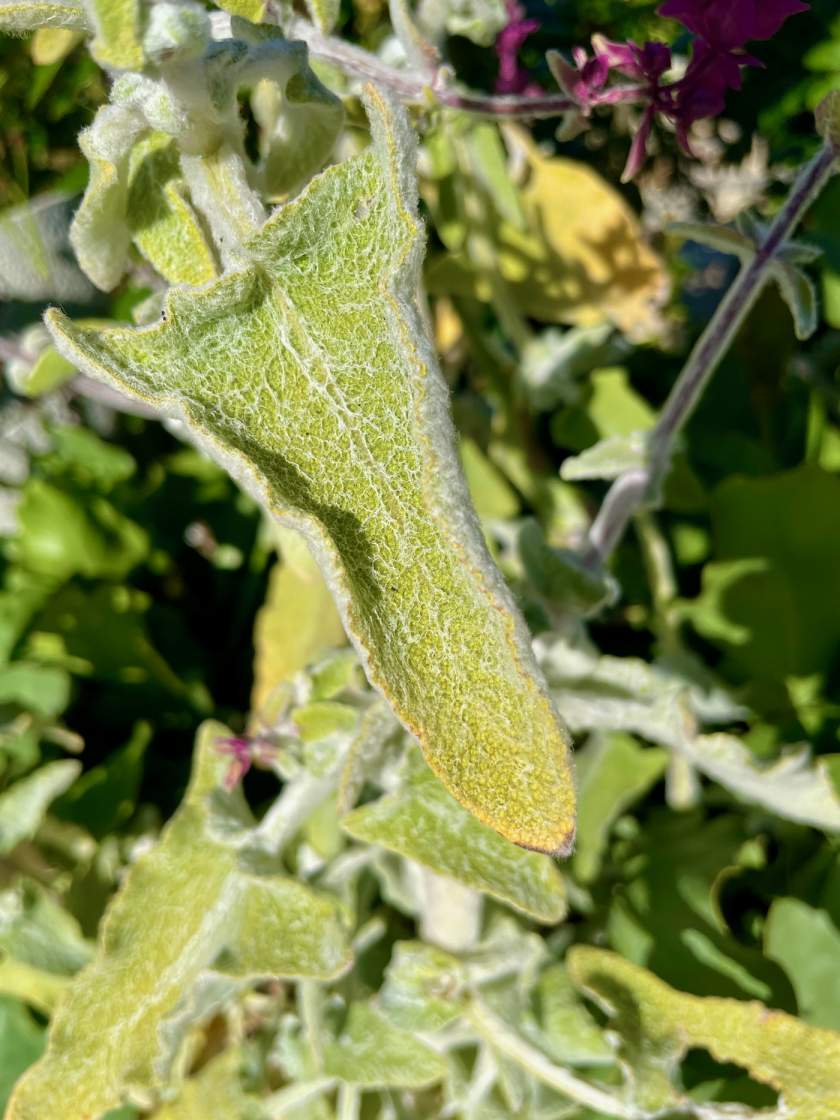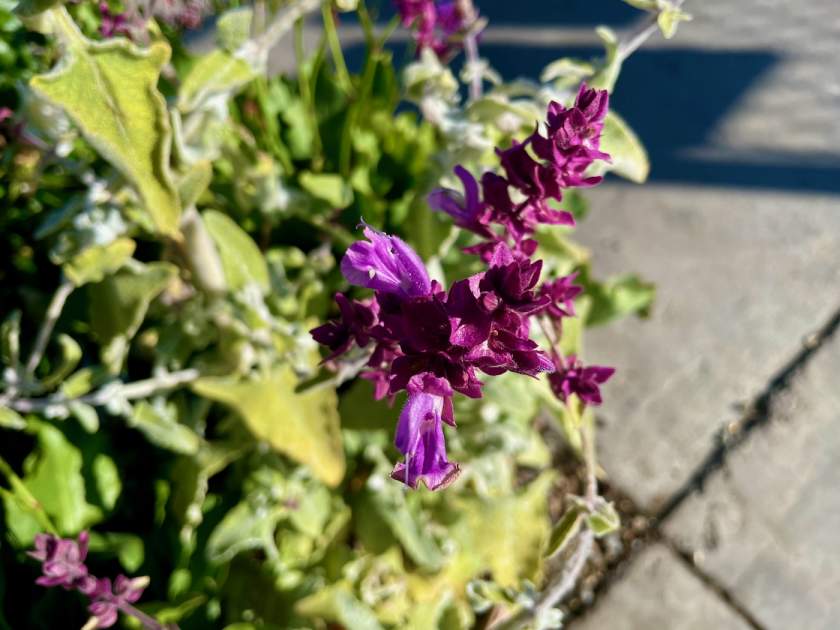Unveiling the Beauty of Salvia canariensis ‘Lancelot’: Lancelot Wooly Canary Island Sage
Salvia canariensis ‘Lancelot’, also known as Lancelot Wooly Canary Island Sage, is a captivating perennial that dazzles with its lavender flowers resembling parrot beaks, gracefully enveloped by deep rosy-lavender bracts. It belongs to the Lamiaceae family, commonly known as the mint family. The foliage of this splendid sage is silvery green, and what makes it truly unique is the dense covering of velvety white hairs called trichomes on the underside of its leaves. These trichomes serve a crucial purpose by helping the plant conserve moisture, making it more drought-resistant.
Native to the Canary Islands in the Atlantic Ocean off the coast of Morocco, Salvia canariensis ‘Lancelot’ boasts a long and storied history. Swedish botanist Carl Linnaeus, renowned for his significant contributions to the field of botany, featured Salvia canariensis in his esteemed work “Species Plantarum” in May 1753. Among the various varieties of Salvia canariensis, Lancelot stands as one of the smaller yet striking cultivars.
Cultivation of Salvia canariensis ‘Lancelot’:
A sun-loving sage, Salvia canariensis ‘Lancelot’ thrives in full sun, displaying its vibrant lavender and purple blossoms with pride. This resilient sage is known for its ability to withstand heat and survive with minimal rainfall, making it an excellent choice for xeriscaping in arid regions. However, it is essential to strike a careful balance, as ‘Lancelot’ is one of the blue tag xeric plants sensitive to overwatering.
Sunlight: For optimal growth and blooming, Salvia canariensis ‘Lancelot’ requires full sun to partial shade. Placing it in a sunny location will ensure a spectacular display of its exquisite lavender flowers.
Watering: While Salvia canariensis ‘Lancelot’ is a drought-tolerant plant, it will need more frequent watering during its initial year of growth. Once established, the plant can withstand periods of drought. However, it is essential to water it deeply when necessary to maintain its health and vigor.
Soil: The ideal soil for Salvia canariensis ‘Lancelot’ is well-drained and sandy. Providing a suitable soil environment ensures the proper development and flourishing of this magnificent sage.
Pest and Disease: Salvia canariensis ‘Lancelot’ is relatively pest and disease-free, adding to its reputation as an easy-to-care-for plant. However, it is essential to monitor the plant regularly for any potential issues and address them promptly if they arise.
Propagation:
Salvia canariensis ‘Lancelot’ can be propagated both by seed and cuttings, offering gardeners multiple options to propagate this exceptional sage.
Seed: To propagate ‘Lancelot’ from seed, sow the seeds directly into the garden in either the spring or fall. Light is essential for the germination process, so avoid covering the seeds with soil. As the seedlings grow to a few inches tall, thin them out to ensure sufficient space for their development.
Cuttings: For propagation by cuttings, select a healthy, young stem that is approximately 4 inches long. Remove the leaves from the lower half of the stem, and dip the cut end into rooting hormone. Plant the cutting in a pot of moist potting mix, and place it in a warm, sunny location. With patience, the cuttings will root in approximately 4-6 weeks.
Once the cuttings have successfully rooted, they can be transplanted into the garden or larger pots. Salvia canariensis ‘Lancelot’ propagated by cuttings will delight with its blooms the following year.
Pruning:
While Salvia canariensis ‘Lancelot’ does not require frequent pruning, removing any dead or diseased leaves or flowers can promote new growth. A slight trimming in late winter or early spring can encourage vigorous growth and continued blooming.
Protection from Frost: While Salvia canariensis ‘Lancelot’ is a shrub in warmer USDA hardiness zones, it behaves as an herbaceous perennial in cooler regions. In areas with cold winters, it is crucial to bring the plant indoors before the first frost to protect it from potential damage. A sunny window and sparing watering will help the plant thrive during its time indoors, and it can be returned to the outdoors in the spring.
With its graceful charm and resilience, Salvia canariensis ‘Lancelot’ stands as an enchanting addition to any garden or landscape. Its delightful lavender flowers and silvery-green foliage are sure to captivate gardeners and visitors alike, making it a must-have for any plant enthusiast. As a magnet for hummingbirds and butterflies, ‘Lancelot’ Wooly Canary Island Sage brings nature’s wonders closer to home, providing a stunning display of color and life throughout the growing season. With its low maintenance requirements and adaptability to various conditions, Salvia canariensis ‘Lancelot’ is truly a gem in the botanical world.






